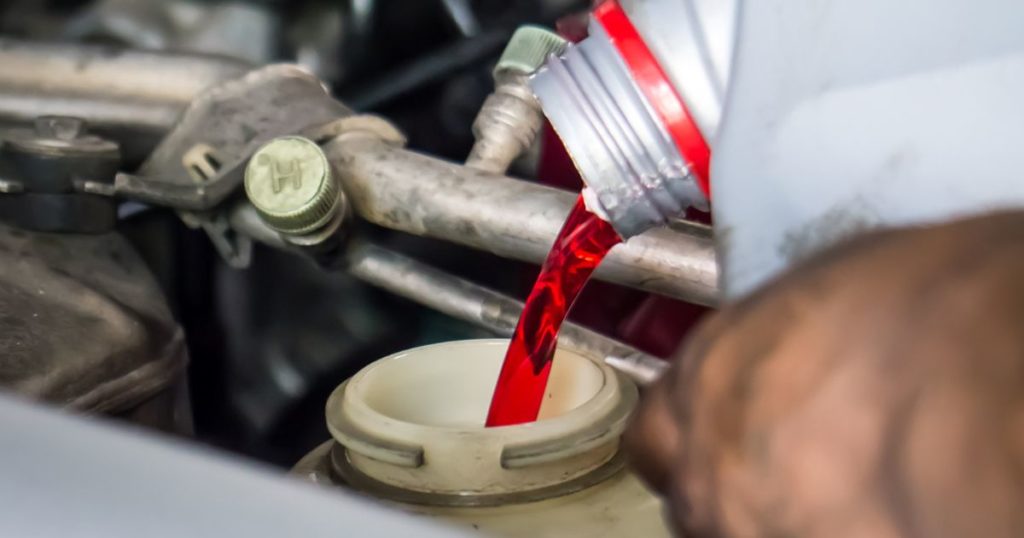Keeping your vehicle in tip-top shape is one of the main responsibilities of every car owner. There are many things to pay attention to when it comes to your vehicle, but one vital duty we have is to track the condition of the mighty automatic transmission.
Many types of automobiles have automatic transmissions, from large SUVs to small hatchbacks. However, you need to check the transmission fluid regularly. Most car owners know to focus on engine oil as a part of maintenance, but don’t overlook your automatic transmission fluids!
For this reason, we have provided you with a brief guide on how to check your transmission fluid level. Take a look below!
When Should You Check Your Transmission Fluid?

A quarterly check of your vehicle’s primary fluids is essential. For instance, you must check your power steering fluid, transmission fluid, and engine oil. If you drive your car regularly, checking the critical fluids frequently is ideal. Brake fluid, coolant, and windshield washer fluid also need to be monitored.
You can check the owner’s manual to learn about your automatic transmission. It gives you maintenance instructions by time or mileage – you may also learn how to replace the transmission fluids on your specific vehicle.
But, the truth is that the fluid level gets low before it becomes old. Professionals at a repair shop also know how to check fluid levels, but it is still a good idea to do the task on your own.
How to Check Transmission Fluid Level – 4 Easy Steps

Below are some steps for DIY transmission fluid checks:
Check the Fluid
Just like the engine needs oil for lubrication, your automatic transmission system needs special fluid to function properly. Standard transmissions and dual-clutch automatics use a particular type of fluid. You can read the manual if unsure about the kind of fluid necessary for transmission.
You do not need special mechanical skills to truly understand transmission health. Only a visual check is required – you will have to check the condition and level of transmission fluid.
Identify the Fluid Dipstick
The most crucial step is finding the transmission oil dipstick under the vehicle’s hood, inside the engine. You should not confuse the engine oil dipstick with your transmission dipstick.
The dipstick is located at the rear end of the engine and is close to the firewall. There is a mark on the dipstick, and this symbol is indicated with a particular color.
Do not be concerned if you are not able to trace the dipstick. Some modern automobiles have sealed-for-life transmissions. This type of transmission does not need any fluid replacement, which explains why it has no dipstick. You can learn more about this in your vehicle’s manual.
Check the Current Fluid Level
For vehicles with transmission dipsticks, you need to go through some additional steps. Make sure to warm up the engine and leave the vehicle idling in the park. Also, make sure that you have parked the car on a level surface.
Keep the dipstick clean by pulling it out. The dipstick will show the level of the transmission fluid. The marks on it may give you three types of indications:
- Fill
- Low
- Full
The transmission fluid color can also signify a lot of things about your vehicle’s transmission health.
Learn About the Fluid Condition
Take a paper towel or choose any white surface to place your dipstick. This will let you analyze the fluid color properly. The transmission fluid condition can also be determined by taking a look at the color.
- If it is reddish-pink, you have no concerns about fluid health.
- Black or dark brown indicates that you should replace the fluid.
- If the dark fluid emits a burnt smell, this is a negative sign – in some cases, the fluid may contain metal shavings.
These symptoms may signal potential damage to internal parts of your transmission. It happens because you have not replaced the transmission fluid at the right frequency. However, unlike other internal components of a car, transmissions usually have no premature mechanical problems.
How to Fill the Transmission Fluid

This is a simple DIY process, and you can avoid hiring a mechanic to save money and time. Make sure to get a long funnel – you can put it into the dipstick hole. Then start pouring the transmission fluid slowly. Recheck the level to ensure that it has reached the desired marking. Be careful, automatic gearboxes should not be overfilled. Moreover, the fluid must not spill on the hot engine surface.
How Long Does Transmission Oil Last?
In order to know for sure, you’ll need to read the owner’s manual. Some car manufacturers claim transmission oil will last the lifetime of the vehicle. Other car brands say that the fluid lasts for 100,000 miles. Many car owners like to replace transmission oil every 40,000 to 50,000 miles.
As transmissions involve a highly complicated mechanism, you need a special machine for a transmission fluid flush. Professional service is recommended for this purpose.
What Would Happen if I Overfilled My Transmission?
Overfilling your transmission can result in damaged internal components. The gears will become submerged and cause foaming problems. The transmission fluid needs to sit at a particular level to retain pressure. When the level is not maintained, the transmission will malfunction or leak.
Does Your Transmission Give a Warning Before the Fluid Level Gets Low?
No, you will not get a clear warning sign. However, your transmission may struggle, and show signs of failure, before it actually fails.
So, it is essential to check the level routinely. Your transmission also may need servicing regularly, depending on the age of your car.
What Are the Signs of Low Car Transmission Fluid Levels?
Below we go over some of the common signs of low transmission fluid levels:
Gear Slippage
If your transmission fluid is normal, it lets you control your vehicle’s hydraulic pressure. So, the engine will also work properly, and you will find an improved performance in your vehicle. A low fluid level prevents your car from generating the correct level of hydraulic pressure.
This is why it can lead to gear slippage problems. Your vehicle will not be able to reach high revolutions per minute (RPM) in the case of low transmission fluid. It will move sluggishly. It is one of the common symptoms of a low transmission fluid level.
Noise
It is normal for an automatic transmission to make a humming or whining noise. But, if you have heard an intensely loud noise from the transmission funnel, it is a sign of low transmission fluid.
Burning Smell
Overheated transmission fluid will lead to the emission of a burning smell. In this condition, you have to check the level of transmission fluid. Inspect the transmission thoroughly and identify whether internal parts are getting hot.
Your car’s transmission comprises multiple moving components. The fluid facilitates lubrication and ensures the smooth function of the parts. However, your transmission will not stay lubricated due to the low fluid level. So, it gets overheated very often.
Transmission Oil Draining
Often, vehicles leak when the transmission oil is low. So, if you notice any leaks underneath the car, you can find that the transmission fluid is low. Although other fluids may leak from your vehicle, you should always pay attention to the transmission fluid.
What Are the Common Reasons Behind Low Transmission Levels?
- Transmission pan puncture
- Fluid line cracks
- Axle seal failure
- Defective torque converter
If you come across any of these (or other issues), you should contact your mechanic or a local service center to diagnose your transmission.
Conclusion
Our guide on how to check transmission fluid levels will hopefully help car owners for years of optimum driving enjoyment. However, you should contact your mechanic if you notice transmission fluid loss or other issues. Highly trained professionals understand your manufacturers recommendations and how to identify leaks and other potential issues.
Even without a known problem it’s crucial that you or your mechanic keep tabs on your transmission oil. It makes your transmission last for a long time and most repair shops offer common transmission services, so make sure to look into that!





